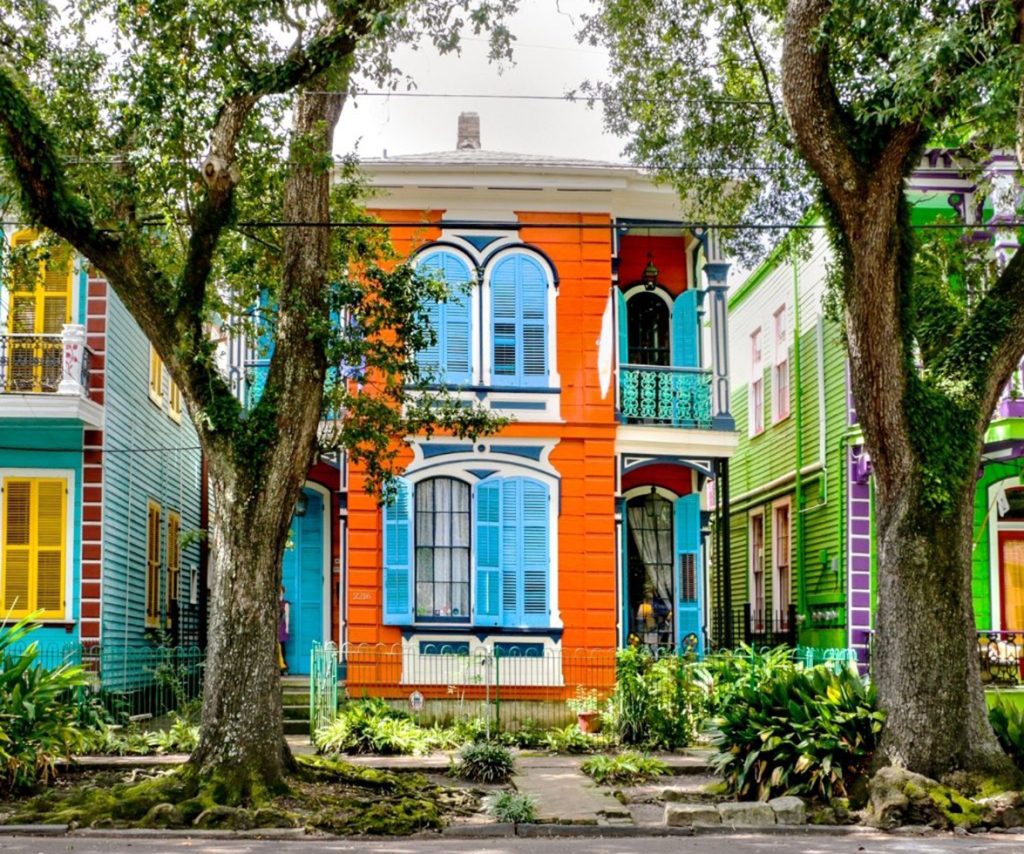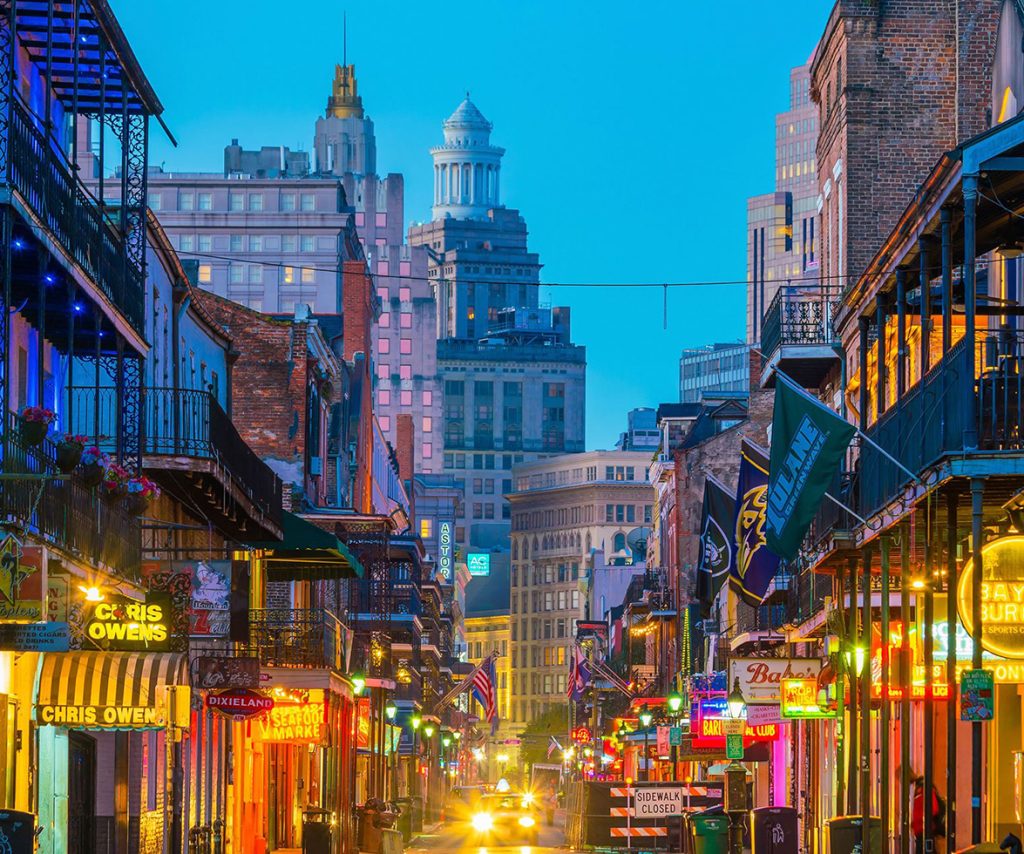When I landed in New Orleans for the first time, I thought I was ready. I had packed sunscreen, mapped out my must-see attractions, and even bookmarked a few food spots on Google Maps. But New Orleans is not just another American city — it’s an intoxicating mix of French, African, Caribbean, and Southern cultures that demands more than a checklist.
If I could go back in time and whisper tips to my “first-time visitor” self, I’d tell myself that the beignets are messier than you think, the humidity is thicker than any sauna, and the rhythm of a brass band parade will catch you when you least expect it.
This guide is everything I wish I had known before my first trip: what to pack, how to budget, how to get around, what to eat (and how to eat it without ruining your shirt), and how to make the most of a short visit.
Packing Essentials: Lessons from My Overstuffed Suitcase
On my first trip, I overpacked like crazy. I had three pairs of jeans (bad idea in humid weather), a jacket I never wore, and shoes that left me blistered after one day in the French Quarter. With time, I’ve learned exactly what to bring and what to leave behind.
• Walking shoes matter more than style. The French Quarter is full of uneven cobblestones, cracked sidewalks, and the occasional puddle from an afternoon storm. The first night I wore leather loafers, and by the time I reached Bourbon Street, I was limping. Now I bring lightweight sneakers with cushioned soles — lifesavers for walking tours.
• Portable fan and cooling towel. I bought a small rechargeable fan from Amazon before my second trip. At first I felt silly carrying it, but on a 95°F day in July, when the humidity wrapped around me like a blanket, I was grateful.
• Rain protection. One July afternoon, the sky opened up so suddenly that I was drenched head to toe. Now I always pack a thin poncho that folds into my bag. Umbrellas are fine, but with New Orleans’ sudden winds, I’ve seen too many turn inside out.
• Crossbody bag with zipper. Bourbon Street after dark is crowded. While I never felt unsafe, I did see a few tourists scrambling after lost wallets. A crossbody bag keeps everything secure.
• Reusable water bottle. Walking in the heat with cocktails in hand is tempting, but dehydration creeps up quickly. Many restaurants and hotels will happily refill your bottle.
One last thing I always pack now? Wet wipes. Between powdered sugar from beignets and spicy crawfish boils, you’ll thank me later.
Dressing the Part: Blending In with the Local Vibe
If New York dresses in black and Paris in chic neutrals, New Orleans dresses in color, flamboyance, and comfort.
• Spring & Fall (March–May, October–November): The weather is near perfect. Light layers like linen shirts, sundresses, and comfortable sandals work well. A light sweater is useful for breezy evenings by the river.
• Summer (June–September): This is survival season. I once walked outside in August at 10 AM and instantly started sweating. Linen and cotton are your best friends. I usually pack double the clothes I think I’ll wear, because I change outfits after a sweaty afternoon.
• Winter (December–February): Compared to northern states, winters are mild. But the humidity makes a 50°F evening feel colder than you expect. A light jacket or a cozy sweater is enough.
Fashion here also leans festive — sequins, beads, and feathers aren’t limited to Mardi Gras. On one random Saturday night, I saw a group of locals in full costume parading down Frenchmen Street, and I realized blending in sometimes means embracing the wild.
Understanding the Culture: More Than Jazz and Beads
New Orleans has layers. On the surface, it’s music, food, and festivals. Dig deeper, and you’ll find traditions shaped by resilience and diversity.
• Music as lifeblood. On my second trip, I stumbled upon a brass band in Tremé, the birthplace of jazz. Within minutes, a crowd had gathered, dancing in the street. It wasn’t a scheduled performance; it was just life happening.
• Festivals everywhere. I once thought Mardi Gras was the only big event. Wrong. My November visit coincided with the Oak Street Po-Boy Festival — dozens of stalls competing to make the city’s best po-boy. I sampled at least six (shrimp, roast beef, catfish) and waddled home stuffed but happy.
• The slower pace. Service at restaurants is rarely rushed, and “on time” doesn’t always mean the same thing here. I had to learn to let go of my big-city impatience and embrace what locals call “New Orleans time.”
The culture here is about savoring moments, not rushing through them.
Budgeting for New Orleans: Splurges and Savings
I’ve visited New Orleans on every kind of budget — backpacking as a broke student, mid-range with friends, and once, treating myself to luxury at Hotel Monteleone.
• Backpacker’s budget: Around $60/day. Stay in hostels like India House Hostel ($25/night), eat at po-boy shops ($10–$12), and rely on streetcars ($3 day pass).
• Mid-range budget: $150/day. Boutique hotels like the French Market Inn ($120/night), dinners at sit-down restaurants ($20–$30 entrées), and cocktails at speakeasies ($10–$12).
• Luxury budget: $250+/day. Historic hotels like the Roosevelt ($250–$350/night), fine dining at Commander’s Palace ($45 entrées), and private swamp tours ($100+).
💡 Money-saving tip I learned the hard way: Don’t take taxis from the airport. A cab to the French Quarter is about $36 flat rate, while the airport shuttle is $24 one-way or $44 round-trip. Ride-shares (Uber/Lyft) usually cost around $28–$35.
Another tip: Look for Happy Hour deals. At Luke (333 St. Charles Ave.), oysters drop to 75 cents each from 3–6 PM.

Getting Around New Orleans: Public Transportation
Unlike cities like New York, New Orleans doesn’t have a subway system. Instead, it relies on buses and the iconic streetcar lines.
Streetcars
There are four main streetcar lines:
- St. Charles Line: Runs from the French Quarter through the Garden District — perfect for sightseeing historic mansions.
- Canal Street Line: Takes you to City Park and the New Orleans Museum of Art.
- Riverfront Line: Runs along the Mississippi River, connecting you to the French Market and Aquarium.
- Rampart/St. Claude Line: Great for exploring local neighborhoods outside the tourist core.
Fare: $1.25 per ride, or you can buy a Jazzy Pass ($3/day, unlimited rides).
Buses
The bus system is extensive but trickier for first-timers. I usually use Google Maps or the RTA app to plan routes.
Comparing to Other Cities
Compared to Atlanta’s MARTA or New York’s subway, New Orleans’ transit is slower and less frequent. But it has charm — riding the St. Charles streetcar feels like stepping back in time.
Getting a Transit Card
You can buy a Jazzy Pass at streetcar stops, local shops, or on the RTA GoMobile app. I recommend the app — it saves time and you don’t need to carry coins.
Street Food You Must Try
New Orleans street food is bold, messy, and unforgettable.
• Beignets at Café du Monde (800 Decatur St.): $3 for a plate of three. They’re served hot, fluffy, and covered in powdered sugar. I made the mistake of wearing black while eating them — don’t do that.
• Po-Boys from Parkway Bakery & Tavern (538 Hagan Ave.): The fried shrimp po-boy ($12) is my favorite.
• Crawfish boils (seasonal): If you’re visiting in spring, find a local vendor selling boiled crawfish by the pound. Spicy, messy, and worth every napkin.
Street Food Safety Tips
• Only eat seafood from busy, well-reviewed stalls. Freshness matters in the heat.
• Always carry wet wipes or hand sanitizer — crawfish boils get wild.
Staying Connected: SIM Cards and Data
On my first trip, I relied on roaming. Big mistake — my phone bill nearly matched my hotel cost.
• AT&T Prepaid and T-Mobile SIMs are the easiest to get. Both have kiosks at Louis Armstrong New Orleans International Airport.
• A $40 prepaid plan usually gets you unlimited data for 30 days.
• Alternatively, grab an eSIM before you land using apps like Airalo.
Planning a 5-Day Mini Itinerary
Here’s what I’d suggest for first-timers:
Day 1: Explore the French Quarter, visit Jackson Square, and end the night with live jazz on Frenchmen Street.
Day 2: Ride the St. Charles streetcar to the Garden District, tour Lafayette Cemetery, and enjoy Magazine Street shopping.
Day 3: Spend the morning at City Park (rent a bike), then visit the New Orleans Museum of Art. Evening swamp tour.
Day 4: Take a steamboat cruise on the Mississippi River, visit the WWII Museum, and have dinner at Commander’s Palace.
Day 5: Day trip to Oak Alley Plantation or Barataria Preserve for swamp hiking.
Adjusting Your Budget
I’ve learned to balance splurges and savings:
• Splurge: Dinner at Commander’s Palace ($40–$60 per entrée).
• Save: Grab breakfast at Café Beignet or Coop’s Place for under $10.
• Splurge: Steamboat Natchez Cruise ($39).
• Save: Free walking tours around the French Quarter (tip-based).
Recommended Day Trips
- Oak Alley Plantation (Vacherie, LA): About an hour away, tours cost $25. The oak-lined entrance is breathtaking.
- Jean Lafitte National Historical Park: Just 30 minutes away — great for swamp tours and wildlife spotting.
- Abita Springs: Known for its quirky museums and local beer.

Travel Insurance
I never travel without insurance anymore. I recommend Allianz Global Assistance OneTrip Prime Plan.
• Coverage: Trip cancellation, medical emergencies, lost baggage, and even hurricane disruptions (important in Louisiana).
• Price: Around $75 for a week-long trip.
• Why I love it: When my luggage was delayed once, Allianz reimbursed me for clothes and toiletries within a week.
My Personal Takeaways
Looking back, New Orleans isn’t just a destination — it’s an experience. From my first sweaty walk down Bourbon Street to sipping café au lait while street musicians played nearby, I realized that the city asks you to slow down, savor, and celebrate.
The most important tips I wish I knew?
• Always carry cash (some bars are cash-only).
• Stay hydrated, especially in summer.
• Be ready for the unexpected — whether it’s a sudden parade or a random crawfish boil invitation.
If you’re visiting New Orleans for the first time, go with an open mind and a flexible itinerary. Pack smart, budget wisely, and embrace the culture. This is a city where history and modern life blend seamlessly — where every corner hides a story and every meal feels like a celebration. And trust me, once you visit, you’ll already be planning your return.
